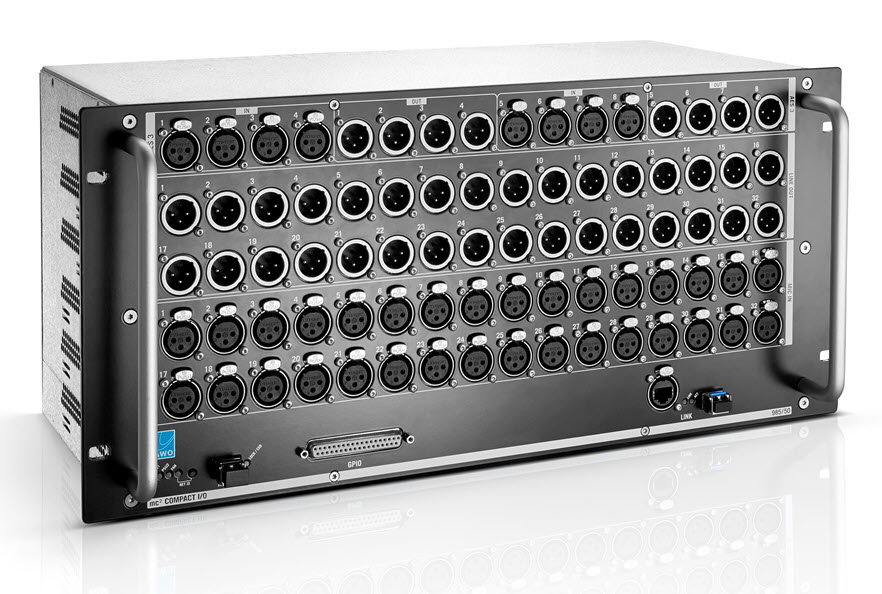The following I/O nodes can be controlled directly from the mc2 console:
- A__stage48/64/80
- A__mic8
- A__digital64
- A__madi4/6
- mc2 Compact IO
- Power Core
- LCU (Lawo Commentary Unit)
Note that the console's Local I/O is treated in the same manner as an external I/O device, even though it is mounted internally within the control surface.
A__line, Compact I/O & Power Core
A__stage48, 80 & 64
 | mc2 Compact I/O

Power Core
 |
Signal Routing
All local audio and GPI/O signals appear in the Signal List display once the I/O device is configured (in HOME). This allows you to route sources from the device to the console's DSP channels. Or, say an Aux bus back to an output from the device.
Parameter Control
All accessible I/O parameters can be controlled in the usual manner.
If a mic/line input is routed to a DSP channel, and channel is assigned to a fader strip, you can use the console's INPUT section to control:
- GAIN - mic input gain.
- 48V - 48V phantom power.
- PAD - a -20dB PAD.
- HPF - cycles through the roll-off frequency options: Off, 40Hz, 80Hz and 140Hz.

Signal Routing
All local audio signals appear in the Signal List display once the I/O device is configured (in HOME). This allows you to route sources from the LCU to the console's DSP channels. Or, say a Group bus back to an LCU output.
Parameter Control
If one of the microphone inputs (MIC A, MIC B or MIC Guest) is routed to a DSP channel, and channel is assigned to a fader strip, you can use the console's INPUT section to control:
- GAIN - mic input gain.
- 48V - is mapped to the On-Air request: On = on-air; Off = off-air.
- HPF - is mapped to the LF Cut.
Please note:
- the mic input gain and LF Cut functions are usually controlled by the LCC operator, and are not available on the LCU front panel.
- when an LCU is controlled from an mc2 system, the LCU ID (which can be defined in the LCU's Settings Subtree) has no function.
Please refer to the "LCU Quick Start Guide" for more details on the available parameters and signals.